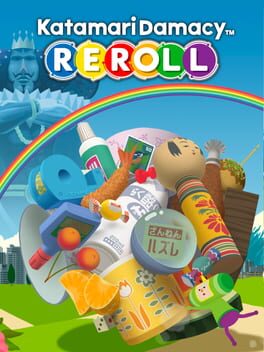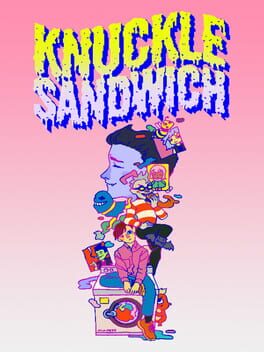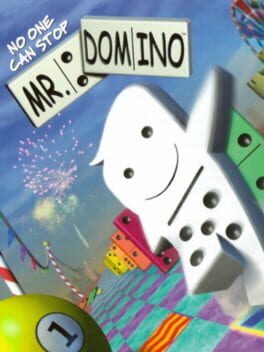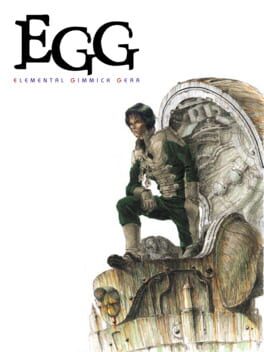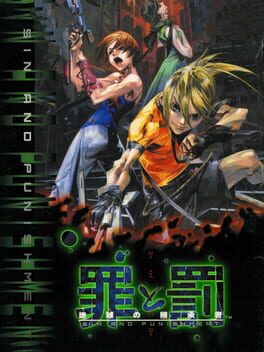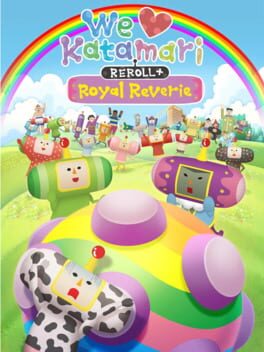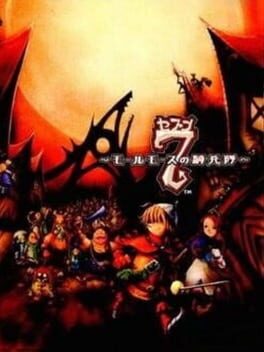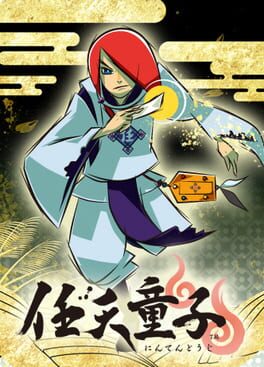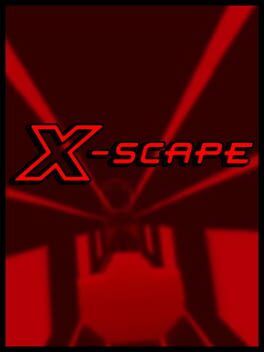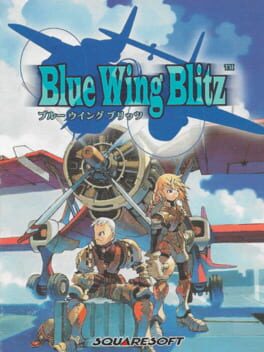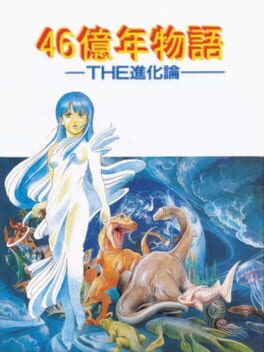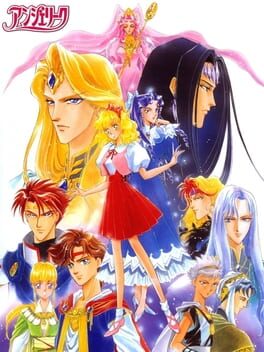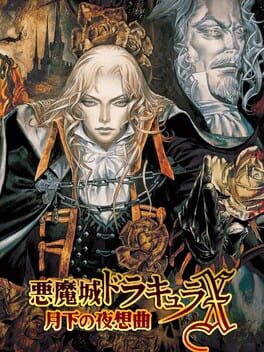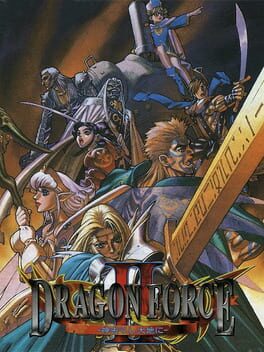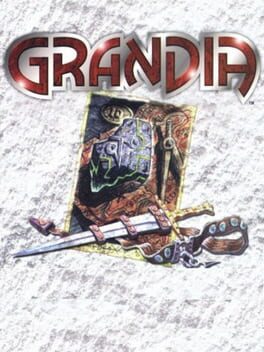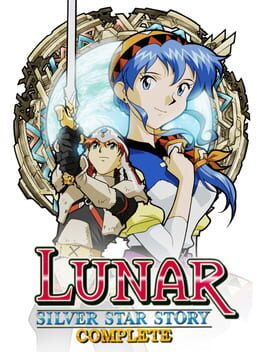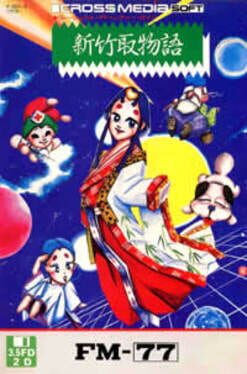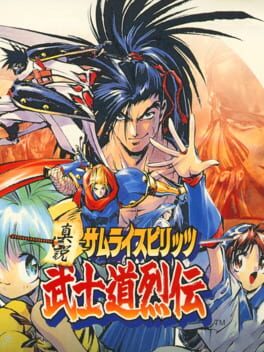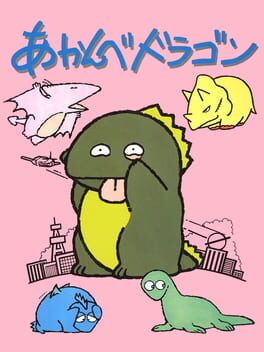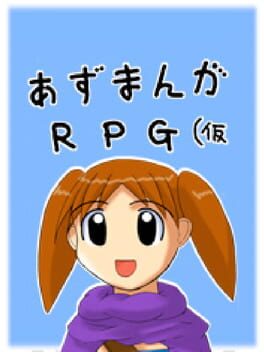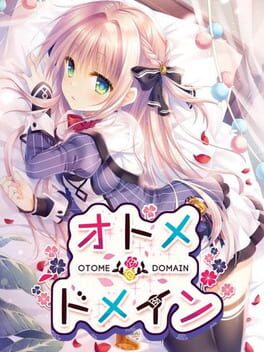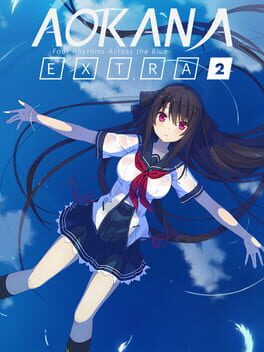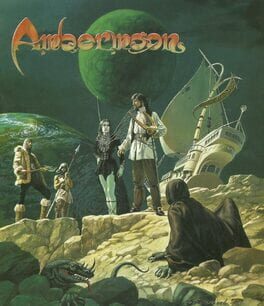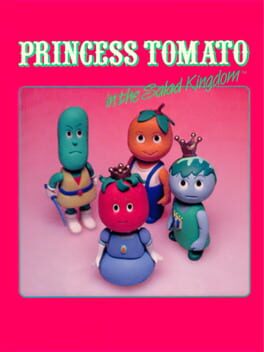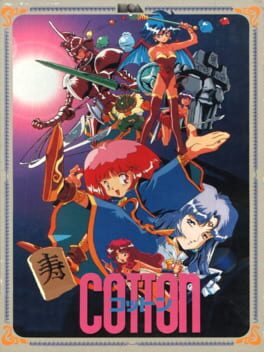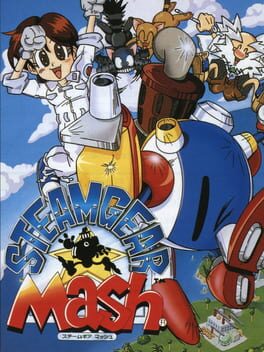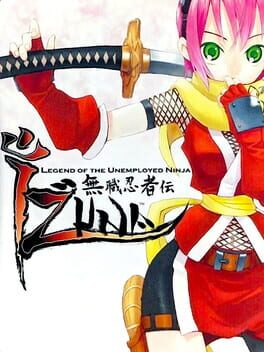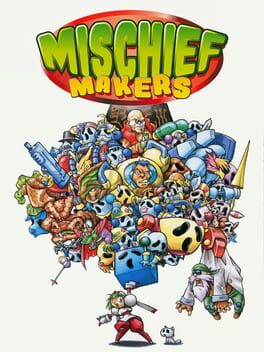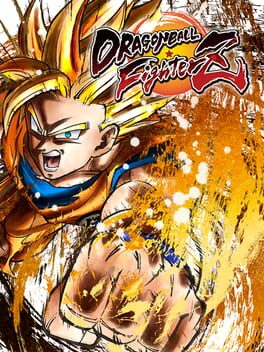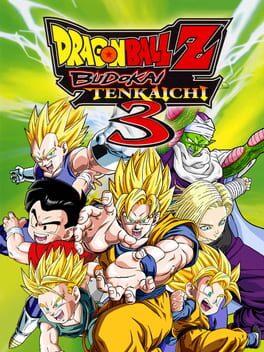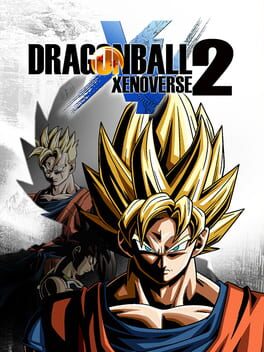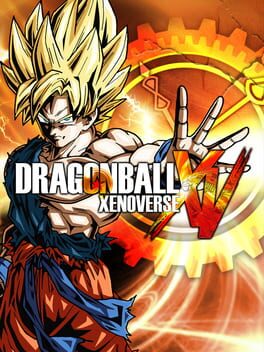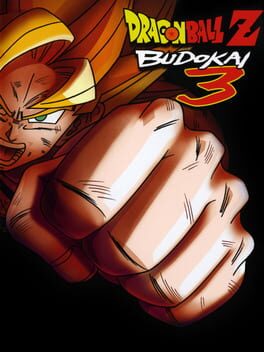otdrmlk
14 reviews liked by otdrmlk
Journey
2012
At this point, I feel like I’ve been playing Journey for half of my life. I’ve played through underwater Journey, forest Journey, air Journey, space Journey, cat Journey, and even boring Journey. Yet upon my yearly ascent in the original Journey on New Year’s Day, I find myself just as floored as when I first picked it up years ago, in spite of clone after clone exhausting my goodwill. What exactly then, is present in the original’s realized game design philosophy that every other spiritual successor has found themselves bereft of?
To answer this question, I want you to imagine a world where Journey doesn’t exist. A world where the formula to indie developers meant something more than just mindlessly tilting up on the left joystick to walk towards the next checkpoint while some narrator waxed poetic in the background. Before Journey, before Flower even, the closest ancestor we had was Ico. Fumito Ueda described his game as an execution of “boy meets girl,” and what it boiled down to was a minimalist adventure game with some puzzles cleverly disguised as platforming and timing segments. Occasionally, you also whack a few shadows while protecting and pulling your female companion Yorda through vast and still castle ruins. It wasn’t a perfect game by any means; the combat was frankly tedious, Yorda lacked much of an identity outside of pointing at objects of interest/opening doors/getting kidnapped, and at the end of the day, there really wasn’t much in the way of a balanced and developed relationship when the player was calling all the shots, but it was still the start of something beautiful. It wasn’t mechanically complex or esoteric in any fashion, but it was different. It was different, and it felt dangerous.
This write-up is not intended to be a critique of Ico, nor is it meant to imply that games proceeding Team Ico's philosophy of “design by subtraction” have since been inferior. Rather, I bring up Ico in particular, because there seems to be this general perception that minimalism results in a crippling lack of mechanical depth. That is, many seem to believe that discarding and minimizing a game’s various elements results in a dearth of tangible mechanics or imagery to cling onto, and thus appears to result in an empty and vacuous experience with little to justify further replays or deeper dives. To me though, this line of thought fundamentally misunderstands the purpose of addition by subtraction. It was never about creating mechanically deep systems with limitless possibilities like an immersive sim or a sandbox. Rather, the philosophy aimed to remove excess layers that distracted from the game’s “more realistic feeling of presence”, such as removing optional bosses and landmarks in Shadow of the Colossus or reducing enemy types in Ico to just a single design. In fairness, the goal wasn't just to remove extraneous elements that made something feel overly “gamey,” but also to marry mechanics in a way where the invisible layer of intended design never made itself too apparent (i.e. hiding the user interface in Shadow of the Colossus outside of fights). It was not just addition by subtraction; it was also addition through illusion.
To that end, I firmly believe that Journey is the best Team Ico game that Fumito Ueda never directed. Journey’s design philosophy was not necessarily revolutionary for its time, considering its predecessors in the forms of Flower and Ico, nor was its ultimate goal of reaching a final destination via walking/jumping/flying mechanics particularly exemplary. What was exemplary was its level of care and precision in how it implemented said minimalist design philosophy. Every time I play through Journey, I pick up more subtle details through its fusion of audio-visual presentation and gameplay that seemed so clear and intuitive that I had taken their presence for granted. There are the obvious strengths, like how Journey wordlessly conveys your path forward by keeping the shining peak of the mountain visible at all times while outside, or how it uses consistent visual language through cloth creatures and strips to demarcate safe zones where the player can recharge their scarf. But there’s more beneath the surface; what about the game's sneaky introduction to the sand-sliding mechanic from the introductory dune so it’s no longer unfamiliar during the exhilarating and committal descent, or how there’s a section of the underground that’s filled with these scarf jellyfish tinted in blue allowing you to remain in flight that evokes the feeling of being underwater, foreshadowing the next section as a tower ascension where the player must continually breach the surface to “swim” and escape? Sure, everyone knows about how the bitter cold disempowers the player by slowing their movement and lowering the scarf’s energy gauge, but I usually don’t hear about how strong winds can chip away at the scarf’s capacity itself or how it reduces the volume and area of effect of your shouts, making it far more difficult to restore your energy gauge from the growing frostbite.
There’s also the overlooked audio aspect of Journey. Granted, everyone loves to discuss the soundtrack’s thematics, like how the final chord of Journey’s motif never resolves a single time in any track until the end of Apotheosis or for that matter, how all the instruments are never fully present until that final ascent, when the entire orchestra finally comes together as one only to slowly fall away as the player and the world fade away. Yet, the sound design regarding Journey’s implementation of said soundtrack often goes underappreciated. Again, there are plenty of clear strengths that have been widely discussed, such as the punctuated stillness of the desert dunes providing room for the piddle paddle of the player’s footsteps amongst the vast desert winds and eventually swelling into triumphant bursts of adventure. But again, there are little subtleties that speak to the soundtrack’s interactivity, like how the backing drum during the aforementioned underwater section gives the track the impression of being muted and seamlessly drops this filter once the player breaches the surface, or how the player’s shouts are always in the key of the backing track’s scale, meaning that the introduced notes remain within the game’s tonality. It’s these little things that further round out Journey’s experience; the music is so seamlessly woven in that it takes a discerning ear to pick out every specific detail, in such a way where it feels like the soundtrack is organically supplementing every memorable moment of the game.
Of course, it’s not enough to just handle the basics well, even if there’s a master’s touch present to carefully disguise these additions so silently. As I mentioned before, popular works need compelling hooks to draw in an audience, but they also need an element of danger to keep that audience engaged. In the case of Journey, Thatgamecompany tackles this through their stealth multiplayer. This is where Journey easily outclasses its successors and may in fact, even have one-upped Ico. If Ico’s main limitation was a lack of autonomy for any non-player characters, then Journey circumvents this problem entirely by replacing the AI with real players instead. The loose implementation adds a catch: nothing in the game aside from the final completion screen listing your companion(s)’ name(s) ever hints on this, and not once is the player given instructions or suggestions on how to interact with said players. The only obvious mechanical incentive from cooperating with other players is the ability to recharge one another’s scarves via proximity/shouts, and there’s no consequence to merely abandoning random players or quitting in the middle of a session. It’s what makes this multiplayer so compelling; many times you’ll find other players just wandering about by themselves, despawning, or quickly rushing ahead without care towards your presence. There’s no guarantee that they’ll cooperate… which makes that one instance where they do that much more memorable. In this sense, I think Jenova Chen and his team solved two problems at once: the aforementioned challenge of granting outside elements a degree of realism, and his own personal challenge of creating a minimalist environment where players had no incentives to act in bad faith despite never having any major incentives to cooperate either, resulting in seemingly organic interactions.
Perhaps it is cheating to state that this spontaneous element is what gives Journey a step-up over its peers, but I also can’t deny that this same feature is exactly what lends the game its identity. It’s hard to provide drastically different experiences for focused single player games after all; no matter how much Fumito Ueda may have insisted that he was inspired by emergent gameplay mechanics and player autonomy to allow for more diverse experiences, there remains an upper limit upon how far those experiences can unravel. However, Thatgamecompany’s take upon the “single-player odyssey” alongside the game’s cyclical nature and short runtime means that Journey is a far more replayable experience while remaining every bit as compelling as its competition. Even after multiple trips up the summit, I continue to be amazed by the thoughtfulness shown to me by other players. I can’t tell you how many times I’ve fallen down the temple from being blown away by the wind, only for my companion to jump down with me, or how many trips through the blizzard were spent slowly trudging together mashing my shout, just like strangers on a cold winter’s night huddling together for warmth while shouting cries of encouragement to take one more step forward. In essence, Journey didn't need an intricate or elaborate story told with fanciful cutscenes and voice-acting; it simply needed to provide a backbone with no other contradicting elements, allowing players to form their own stories by experiencing the game on their own terms.
Journey isn’t mechanically rich or wildly innovative in terms of its scope, but it doesn’t have to be. Rather, it’s a deceptively simple yet meticulous and thoughtfully different approach upon a respected design philosophy, which aimed to further refine said formula by whittling down any elements that detracted from the game’s constructed sense of reality. Similarly, it doesn't feel the need to present a grandiose narrative, instead stripping away any specific contextual layers as to allow players to create memorable experiences with no conflicting moments in-between. I should be sick of this formula after tackling so many misguided copycats, and I can't deny that I was afraid to label yet another old favorite as propped up by nostalgia. Thankfully, my fears have been assuaged. I keep waiting for the day where I’ll finally be content putting this down forever… but that day has yet to come. I was not the first adventurer to embark upon this pilgrimage, nor will I be the last. Maybe I just need to get over my cynicism and accept that there was never anything to be cynical of to begin with. I’m sure more developers will continue to lazily carbon copy one of my favorites until the end of time, but that doesn’t mean the good times have to end.
Thanks for reading, everyone. Happy new year, and here’s to another journey around the sun.
To answer this question, I want you to imagine a world where Journey doesn’t exist. A world where the formula to indie developers meant something more than just mindlessly tilting up on the left joystick to walk towards the next checkpoint while some narrator waxed poetic in the background. Before Journey, before Flower even, the closest ancestor we had was Ico. Fumito Ueda described his game as an execution of “boy meets girl,” and what it boiled down to was a minimalist adventure game with some puzzles cleverly disguised as platforming and timing segments. Occasionally, you also whack a few shadows while protecting and pulling your female companion Yorda through vast and still castle ruins. It wasn’t a perfect game by any means; the combat was frankly tedious, Yorda lacked much of an identity outside of pointing at objects of interest/opening doors/getting kidnapped, and at the end of the day, there really wasn’t much in the way of a balanced and developed relationship when the player was calling all the shots, but it was still the start of something beautiful. It wasn’t mechanically complex or esoteric in any fashion, but it was different. It was different, and it felt dangerous.
This write-up is not intended to be a critique of Ico, nor is it meant to imply that games proceeding Team Ico's philosophy of “design by subtraction” have since been inferior. Rather, I bring up Ico in particular, because there seems to be this general perception that minimalism results in a crippling lack of mechanical depth. That is, many seem to believe that discarding and minimizing a game’s various elements results in a dearth of tangible mechanics or imagery to cling onto, and thus appears to result in an empty and vacuous experience with little to justify further replays or deeper dives. To me though, this line of thought fundamentally misunderstands the purpose of addition by subtraction. It was never about creating mechanically deep systems with limitless possibilities like an immersive sim or a sandbox. Rather, the philosophy aimed to remove excess layers that distracted from the game’s “more realistic feeling of presence”, such as removing optional bosses and landmarks in Shadow of the Colossus or reducing enemy types in Ico to just a single design. In fairness, the goal wasn't just to remove extraneous elements that made something feel overly “gamey,” but also to marry mechanics in a way where the invisible layer of intended design never made itself too apparent (i.e. hiding the user interface in Shadow of the Colossus outside of fights). It was not just addition by subtraction; it was also addition through illusion.
To that end, I firmly believe that Journey is the best Team Ico game that Fumito Ueda never directed. Journey’s design philosophy was not necessarily revolutionary for its time, considering its predecessors in the forms of Flower and Ico, nor was its ultimate goal of reaching a final destination via walking/jumping/flying mechanics particularly exemplary. What was exemplary was its level of care and precision in how it implemented said minimalist design philosophy. Every time I play through Journey, I pick up more subtle details through its fusion of audio-visual presentation and gameplay that seemed so clear and intuitive that I had taken their presence for granted. There are the obvious strengths, like how Journey wordlessly conveys your path forward by keeping the shining peak of the mountain visible at all times while outside, or how it uses consistent visual language through cloth creatures and strips to demarcate safe zones where the player can recharge their scarf. But there’s more beneath the surface; what about the game's sneaky introduction to the sand-sliding mechanic from the introductory dune so it’s no longer unfamiliar during the exhilarating and committal descent, or how there’s a section of the underground that’s filled with these scarf jellyfish tinted in blue allowing you to remain in flight that evokes the feeling of being underwater, foreshadowing the next section as a tower ascension where the player must continually breach the surface to “swim” and escape? Sure, everyone knows about how the bitter cold disempowers the player by slowing their movement and lowering the scarf’s energy gauge, but I usually don’t hear about how strong winds can chip away at the scarf’s capacity itself or how it reduces the volume and area of effect of your shouts, making it far more difficult to restore your energy gauge from the growing frostbite.
There’s also the overlooked audio aspect of Journey. Granted, everyone loves to discuss the soundtrack’s thematics, like how the final chord of Journey’s motif never resolves a single time in any track until the end of Apotheosis or for that matter, how all the instruments are never fully present until that final ascent, when the entire orchestra finally comes together as one only to slowly fall away as the player and the world fade away. Yet, the sound design regarding Journey’s implementation of said soundtrack often goes underappreciated. Again, there are plenty of clear strengths that have been widely discussed, such as the punctuated stillness of the desert dunes providing room for the piddle paddle of the player’s footsteps amongst the vast desert winds and eventually swelling into triumphant bursts of adventure. But again, there are little subtleties that speak to the soundtrack’s interactivity, like how the backing drum during the aforementioned underwater section gives the track the impression of being muted and seamlessly drops this filter once the player breaches the surface, or how the player’s shouts are always in the key of the backing track’s scale, meaning that the introduced notes remain within the game’s tonality. It’s these little things that further round out Journey’s experience; the music is so seamlessly woven in that it takes a discerning ear to pick out every specific detail, in such a way where it feels like the soundtrack is organically supplementing every memorable moment of the game.
Of course, it’s not enough to just handle the basics well, even if there’s a master’s touch present to carefully disguise these additions so silently. As I mentioned before, popular works need compelling hooks to draw in an audience, but they also need an element of danger to keep that audience engaged. In the case of Journey, Thatgamecompany tackles this through their stealth multiplayer. This is where Journey easily outclasses its successors and may in fact, even have one-upped Ico. If Ico’s main limitation was a lack of autonomy for any non-player characters, then Journey circumvents this problem entirely by replacing the AI with real players instead. The loose implementation adds a catch: nothing in the game aside from the final completion screen listing your companion(s)’ name(s) ever hints on this, and not once is the player given instructions or suggestions on how to interact with said players. The only obvious mechanical incentive from cooperating with other players is the ability to recharge one another’s scarves via proximity/shouts, and there’s no consequence to merely abandoning random players or quitting in the middle of a session. It’s what makes this multiplayer so compelling; many times you’ll find other players just wandering about by themselves, despawning, or quickly rushing ahead without care towards your presence. There’s no guarantee that they’ll cooperate… which makes that one instance where they do that much more memorable. In this sense, I think Jenova Chen and his team solved two problems at once: the aforementioned challenge of granting outside elements a degree of realism, and his own personal challenge of creating a minimalist environment where players had no incentives to act in bad faith despite never having any major incentives to cooperate either, resulting in seemingly organic interactions.
Perhaps it is cheating to state that this spontaneous element is what gives Journey a step-up over its peers, but I also can’t deny that this same feature is exactly what lends the game its identity. It’s hard to provide drastically different experiences for focused single player games after all; no matter how much Fumito Ueda may have insisted that he was inspired by emergent gameplay mechanics and player autonomy to allow for more diverse experiences, there remains an upper limit upon how far those experiences can unravel. However, Thatgamecompany’s take upon the “single-player odyssey” alongside the game’s cyclical nature and short runtime means that Journey is a far more replayable experience while remaining every bit as compelling as its competition. Even after multiple trips up the summit, I continue to be amazed by the thoughtfulness shown to me by other players. I can’t tell you how many times I’ve fallen down the temple from being blown away by the wind, only for my companion to jump down with me, or how many trips through the blizzard were spent slowly trudging together mashing my shout, just like strangers on a cold winter’s night huddling together for warmth while shouting cries of encouragement to take one more step forward. In essence, Journey didn't need an intricate or elaborate story told with fanciful cutscenes and voice-acting; it simply needed to provide a backbone with no other contradicting elements, allowing players to form their own stories by experiencing the game on their own terms.
Journey isn’t mechanically rich or wildly innovative in terms of its scope, but it doesn’t have to be. Rather, it’s a deceptively simple yet meticulous and thoughtfully different approach upon a respected design philosophy, which aimed to further refine said formula by whittling down any elements that detracted from the game’s constructed sense of reality. Similarly, it doesn't feel the need to present a grandiose narrative, instead stripping away any specific contextual layers as to allow players to create memorable experiences with no conflicting moments in-between. I should be sick of this formula after tackling so many misguided copycats, and I can't deny that I was afraid to label yet another old favorite as propped up by nostalgia. Thankfully, my fears have been assuaged. I keep waiting for the day where I’ll finally be content putting this down forever… but that day has yet to come. I was not the first adventurer to embark upon this pilgrimage, nor will I be the last. Maybe I just need to get over my cynicism and accept that there was never anything to be cynical of to begin with. I’m sure more developers will continue to lazily carbon copy one of my favorites until the end of time, but that doesn’t mean the good times have to end.
Thanks for reading, everyone. Happy new year, and here’s to another journey around the sun.
To me, Katamari Damacy is the margherita pizza of video games. It's one of the simplest yet most innately fulfilling concepts in the medium: roll up things with your ball to become big to roll up more things. While this description is accurate however, it doesn't do justice towards the game's underlying complexity. Committal tank controls combined with the seemingly strewn about yet carefully placed objects of varying sizes means that Katamari forces players to consider both the micro and macro design which the game effortlessly excels at. The player must weave in and out of clusters of increasingly large objects, building up their sphere while also mapping out the optimal paths (snagging relevant objects while factoring in how their shapes, once collected, will alter the roll) and keeping in mind how larger objects must be avoided at first and later consumed in the growing mass as the world appears to shrinks around you. For this reason, I think it's not just a simple power fantasy, and instead more closely resembles pure obstacle escalation. Katamari Damacy really drills in the sense of player progression from how the world unfolds from sense of scale (which is why it gets away with only three distinct stages) and even seemingly inverts its own concepts with side stages that force you to avoid smaller themed objects just to get your katamari to the perfect size for the ultimate outcome: the reward is made that much more gratifying with just a bit of restraint.
This all works seamlessly because Katamari is the king of player feedback. It can certainly feel frustrating at first, getting tossed around like fireworks by these moving objects that dwarf you, but the game knows exactly how to communicate your inherent progress. As your ball exponentially swells, these moving objects go from sending you flying, to lacking any significant impact upon contact, to eventually spotting the player and running away from the growing catastrophe. There's nothing more viscerally satisfying than coming back to mobile obstacles that were pushing you around and flattening them, hearing their cry as they too become stuck in the jumbled mess of rolling flotsam while the King of the Cosmos quips in the background. Simply put, the concept never outstays its welcome.
Going back to the opening metaphor, it requires much finesse to make all these different concepts sing together with little friction in a video game, this fusion of audio-visual presentation and player input. That said, to successfully disguise its intricate design and depth beneath its far-reaching artistic vision and simple yet realized gameplay mechanics takes a master's touch. Katamari Damacy does not try to explain why it works or how it succeeds, because it simply is, and it just does. Perhaps I've moved onto greater and grander things since that have built off of this, but I have to admit that sometimes, you just can't beat the basics in life. It's always worth going back for a slice or two every now and then, just to remind yourself that this is why video games exist in the first place: because underneath all this talk of focus and cohesion, video games are just goddamn fun.
Also, it's fantastic hangover food for you and your buddies after a long night, when they come calling you for content and suddenly it's 3 AM in a packed Discord call where everyone is wailing "YOU'REEEEE LONNEEELLLY ROLLING STARRRR" as this growing, screaming ball of flailing limbs bounces helplessly about for yet another awry creation. Let the good times roll.
This all works seamlessly because Katamari is the king of player feedback. It can certainly feel frustrating at first, getting tossed around like fireworks by these moving objects that dwarf you, but the game knows exactly how to communicate your inherent progress. As your ball exponentially swells, these moving objects go from sending you flying, to lacking any significant impact upon contact, to eventually spotting the player and running away from the growing catastrophe. There's nothing more viscerally satisfying than coming back to mobile obstacles that were pushing you around and flattening them, hearing their cry as they too become stuck in the jumbled mess of rolling flotsam while the King of the Cosmos quips in the background. Simply put, the concept never outstays its welcome.
Going back to the opening metaphor, it requires much finesse to make all these different concepts sing together with little friction in a video game, this fusion of audio-visual presentation and player input. That said, to successfully disguise its intricate design and depth beneath its far-reaching artistic vision and simple yet realized gameplay mechanics takes a master's touch. Katamari Damacy does not try to explain why it works or how it succeeds, because it simply is, and it just does. Perhaps I've moved onto greater and grander things since that have built off of this, but I have to admit that sometimes, you just can't beat the basics in life. It's always worth going back for a slice or two every now and then, just to remind yourself that this is why video games exist in the first place: because underneath all this talk of focus and cohesion, video games are just goddamn fun.
Also, it's fantastic hangover food for you and your buddies after a long night, when they come calling you for content and suddenly it's 3 AM in a packed Discord call where everyone is wailing "YOU'REEEEE LONNEEELLLY ROLLING STARRRR" as this growing, screaming ball of flailing limbs bounces helplessly about for yet another awry creation. Let the good times roll.
Knuckle Sandwich
2023
First I'm gonna say this, unlike a lot of early players for this game, I was not a backer or a religious follower. Some time ago I saw that a silly indie RPG in a modern setting with a unique concept for combat was being made and I wishlisted it. Outside of a few snippets, I didn't know much before playing it.
This game starts off really wacky and I love it. Its simply throwing joke after joke, minigame after minigame, and its all really fun while establishing the game's really silly and hyper sense of humor and wacky variety in gameplay. And I'll say it now, the humor is the highlight of the game for me. It consistently had me laughing at almost every cutscene that attempted funnies and a good chunk of NPC dialog got a solid nose exhale out of me. So in terms of being weird and goofy, the game gets an A+ for me.
Then it just, and I'll keep this vague for spoiler reasons, randomly pulls a... Very dark twist out of nowhere. It's completely jarring, and I don't think it was supposed to be a joke. For a minute it kind of plays up the guilt and scale of what happened. "Okay" I thought, "this isn't what I expected at all but, hey, I wasn't immediately into how dark Omori got, and that's one of my favorite games ever." The only problem is that Knuckle Sandwich doesn't really focus on that. Knuckle Sandwich doesn't really focus on... Anything, unfortunately. Right around here, completely contrasting that, you get a big exposition dump about some sci-fi fantastical nonsense on how the world works as we explore some weird glitch world. So already I'm a bit confused on what they want to explore, and then when you get out the game begins to set up a mysterious conspiracy sort of maybe loosely related to what was dumped on you probably, Bus Driver isn't entirely sure at least.
Like, okay? Is this a grim comedy with dark themes, a modern fantasy adventure, or a conspiracy mystery story? It feels like the game tries to do all three at once and can't really focus on any of them. Even outside of story content, the required overworld minigames pretty much vanish after you get party members and not too long after the burger joint the game is named after just goes into the background until near the ending. This game is so dissociated it feels entirely different at the beginning, middle, and ending. The dark stuff after the mystery properly begins outside of a couple vague references completely vanishes until and I'm not joking the last section of the last proper dungeon of the game. The weird fantastical stuff also vanishes for large chunks of the middle of the game as you're exploring more of Bright City, my man Bus Driver stops hooking you up with info outside of a few set points once you get far enough, and even then all he usually has to say is "Maybe the info is here? Idk."
The conspiracy angle I guess fits this game the best, but it just doesn't explore it well enough. You spend a huge chunk of the game chasing a rival party that ends up meaning very little in the grand scheme of things. And god the actual twist on what's really going on is so freaking silly and hardly set-up since the game spent so much time exploring other stuff. The main "foreshadowing" is a running gag where I can't even tell how it would work in-universe. This would be fine if the game was all silly and goofy, but no right after the villain does some disastrous crap that's so freaking jarring, and then the game just... Moves on! Like yeah sure nothing to explore there.
I just did not care for the endgame of Knuckle Sandwich at all. It pulls back in the other two concepts it was exploring in a haphazard way that just seems so confused. Elaborating on the dark stuff after hours of not acknowledging it, pushing the fantastical elements front and center to the point where after the final boss the game just delves into complete goofy nonsense that while pretty funny feels like it undermines the game, and again, has a really unsatisfying twist of a conclusion.
So yeah... I'm not very big on the story if that isn't clear enough. However, I don't really have only bad to say about "story" scenes surprisingly enough.
Once again the humor is excellent, whenever the game is doing dumb Mario & Luigi-type shenanigans, I was fully into it. The many scenarios that crowded the middle of the game were also pretty amusing or interesting. Yeah doing random crap around this cruise ship is pretty much filler, but it's fun, and that's what I was looking for. I liked some of the characters, too. None of them are explored all that much, but I was happy when Echo, Thea, Bus Driver, and especially Brightside were around. The overworld was nice too, NPCs are great, sometimes they feel like they have their own little punchlines and progression as they appear throughout the game. The dungeons were fun too, nothing crazy but I think they struck a good balance of puzzles versus combat. I didn't find much in the overworld to explore outside of those, but what I did find was neat. Got really into the arcade minigames especially.
But hey, the story isn't what got me interested in the game. It was the combat, and... Yeah, it's pretty good! WarioWare is a series that has a special place in my heart and the idea of combining it with a typical turn-based RPG sounds ridiculous yet sort of genius. Dodging enemy attacks never got old to me, I love how sometimes the minigames make sense for what the enemy is and sometimes it's just "Play golf and avoid hitting the cow." While most are pretty basic with ideas I've seen many times before, they were still fun with very few exceptions.
This is where I start nitpicking.
First off, attacking. There are three minigames for regular attacks, which are all fun, but the circle one is way too strong. It's just easier and has way more damage potential and often for me resulted in getting wins way earlier. There's also the minigames for special attacks which are fun but man you just don't get that many. Each character gets like two? I was getting really sick of using beat up on the protagonist, hell, he doesn't get many skills at all considering you have him the whole game. Equipping skills as items is an option but those are limited by your small, occasionally annoying inventory, and even smaller amount of equipment options.
Party member balance seems to be an issue in general. You don't get to choose your partner until the late game but I don't know why you would choose anyone aside from Thea, it took me a while to realize it but her flare up skill just freaking breaks her with how strong she can get on gop of her pretty easy skill attack minigames. Thankfully though I think the difficulty is handled well to (mostly) offset that and most other things in the game. You can customize minigame difficulty and how much damage you take in percentages of 10 perfectly to fit how hard you want the game to be, on top of other options like autoheal or disabling EXP all together. I thought a lot of this game was too easy but after customizing it it felt just right. Only thing that seems annoying with challenge runs using those are those undodgeable attacks that hit everyone, those just feel cheap. Only other complaint I think worth mentioning is that I think a lot of bosses go on just a tad bit too long, but don't let that distract from the fact that overall, I had fun battling in this game. It's fast-paced, fun, and always kept my attention with what they were going to throw at me next. I was never flat-out sick of battling, which even happens for combat systems I love, and I think this game's fast pace is to thank for that.
And this all makes me feel really conflicted. I was having a good time running through this game, laughing at all the ridiculous scenes, getting into fun battles with the goofiest systems, and absolutely digging the GBA-inspired aesthetic and music which is just overall really solid. However, now when I think about this game having beaten it, my thoughts are just soured by just how disappointed I was with the story and how unhappy I am with how it unraveled in the ending. I mean how much of this review was just me being confused on what it was even going for? I don't know, I feel like I'm being too harsh. This game clearly had a lot of heart put into it, but it almost feels as if the game was so excited to put out all of its ideas that it got kind of lost on the way of doing it. I guess it's decent overall? I do see a lot of potential here, and Andy Brophy seems like a lovable dude, so I'm definitely interested in seeing what he cooks up in the future.
This game starts off really wacky and I love it. Its simply throwing joke after joke, minigame after minigame, and its all really fun while establishing the game's really silly and hyper sense of humor and wacky variety in gameplay. And I'll say it now, the humor is the highlight of the game for me. It consistently had me laughing at almost every cutscene that attempted funnies and a good chunk of NPC dialog got a solid nose exhale out of me. So in terms of being weird and goofy, the game gets an A+ for me.
Then it just, and I'll keep this vague for spoiler reasons, randomly pulls a... Very dark twist out of nowhere. It's completely jarring, and I don't think it was supposed to be a joke. For a minute it kind of plays up the guilt and scale of what happened. "Okay" I thought, "this isn't what I expected at all but, hey, I wasn't immediately into how dark Omori got, and that's one of my favorite games ever." The only problem is that Knuckle Sandwich doesn't really focus on that. Knuckle Sandwich doesn't really focus on... Anything, unfortunately. Right around here, completely contrasting that, you get a big exposition dump about some sci-fi fantastical nonsense on how the world works as we explore some weird glitch world. So already I'm a bit confused on what they want to explore, and then when you get out the game begins to set up a mysterious conspiracy sort of maybe loosely related to what was dumped on you probably, Bus Driver isn't entirely sure at least.
Like, okay? Is this a grim comedy with dark themes, a modern fantasy adventure, or a conspiracy mystery story? It feels like the game tries to do all three at once and can't really focus on any of them. Even outside of story content, the required overworld minigames pretty much vanish after you get party members and not too long after the burger joint the game is named after just goes into the background until near the ending. This game is so dissociated it feels entirely different at the beginning, middle, and ending. The dark stuff after the mystery properly begins outside of a couple vague references completely vanishes until and I'm not joking the last section of the last proper dungeon of the game. The weird fantastical stuff also vanishes for large chunks of the middle of the game as you're exploring more of Bright City, my man Bus Driver stops hooking you up with info outside of a few set points once you get far enough, and even then all he usually has to say is "Maybe the info is here? Idk."
The conspiracy angle I guess fits this game the best, but it just doesn't explore it well enough. You spend a huge chunk of the game chasing a rival party that ends up meaning very little in the grand scheme of things. And god the actual twist on what's really going on is so freaking silly and hardly set-up since the game spent so much time exploring other stuff. The main "foreshadowing" is a running gag where I can't even tell how it would work in-universe. This would be fine if the game was all silly and goofy, but no right after the villain does some disastrous crap that's so freaking jarring, and then the game just... Moves on! Like yeah sure nothing to explore there.
I just did not care for the endgame of Knuckle Sandwich at all. It pulls back in the other two concepts it was exploring in a haphazard way that just seems so confused. Elaborating on the dark stuff after hours of not acknowledging it, pushing the fantastical elements front and center to the point where after the final boss the game just delves into complete goofy nonsense that while pretty funny feels like it undermines the game, and again, has a really unsatisfying twist of a conclusion.
So yeah... I'm not very big on the story if that isn't clear enough. However, I don't really have only bad to say about "story" scenes surprisingly enough.
Once again the humor is excellent, whenever the game is doing dumb Mario & Luigi-type shenanigans, I was fully into it. The many scenarios that crowded the middle of the game were also pretty amusing or interesting. Yeah doing random crap around this cruise ship is pretty much filler, but it's fun, and that's what I was looking for. I liked some of the characters, too. None of them are explored all that much, but I was happy when Echo, Thea, Bus Driver, and especially Brightside were around. The overworld was nice too, NPCs are great, sometimes they feel like they have their own little punchlines and progression as they appear throughout the game. The dungeons were fun too, nothing crazy but I think they struck a good balance of puzzles versus combat. I didn't find much in the overworld to explore outside of those, but what I did find was neat. Got really into the arcade minigames especially.
But hey, the story isn't what got me interested in the game. It was the combat, and... Yeah, it's pretty good! WarioWare is a series that has a special place in my heart and the idea of combining it with a typical turn-based RPG sounds ridiculous yet sort of genius. Dodging enemy attacks never got old to me, I love how sometimes the minigames make sense for what the enemy is and sometimes it's just "Play golf and avoid hitting the cow." While most are pretty basic with ideas I've seen many times before, they were still fun with very few exceptions.
This is where I start nitpicking.
First off, attacking. There are three minigames for regular attacks, which are all fun, but the circle one is way too strong. It's just easier and has way more damage potential and often for me resulted in getting wins way earlier. There's also the minigames for special attacks which are fun but man you just don't get that many. Each character gets like two? I was getting really sick of using beat up on the protagonist, hell, he doesn't get many skills at all considering you have him the whole game. Equipping skills as items is an option but those are limited by your small, occasionally annoying inventory, and even smaller amount of equipment options.
Party member balance seems to be an issue in general. You don't get to choose your partner until the late game but I don't know why you would choose anyone aside from Thea, it took me a while to realize it but her flare up skill just freaking breaks her with how strong she can get on gop of her pretty easy skill attack minigames. Thankfully though I think the difficulty is handled well to (mostly) offset that and most other things in the game. You can customize minigame difficulty and how much damage you take in percentages of 10 perfectly to fit how hard you want the game to be, on top of other options like autoheal or disabling EXP all together. I thought a lot of this game was too easy but after customizing it it felt just right. Only thing that seems annoying with challenge runs using those are those undodgeable attacks that hit everyone, those just feel cheap. Only other complaint I think worth mentioning is that I think a lot of bosses go on just a tad bit too long, but don't let that distract from the fact that overall, I had fun battling in this game. It's fast-paced, fun, and always kept my attention with what they were going to throw at me next. I was never flat-out sick of battling, which even happens for combat systems I love, and I think this game's fast pace is to thank for that.
And this all makes me feel really conflicted. I was having a good time running through this game, laughing at all the ridiculous scenes, getting into fun battles with the goofiest systems, and absolutely digging the GBA-inspired aesthetic and music which is just overall really solid. However, now when I think about this game having beaten it, my thoughts are just soured by just how disappointed I was with the story and how unhappy I am with how it unraveled in the ending. I mean how much of this review was just me being confused on what it was even going for? I don't know, I feel like I'm being too harsh. This game clearly had a lot of heart put into it, but it almost feels as if the game was so excited to put out all of its ideas that it got kind of lost on the way of doing it. I guess it's decent overall? I do see a lot of potential here, and Andy Brophy seems like a lovable dude, so I'm definitely interested in seeing what he cooks up in the future.
Knuckle Sandwich
2023
I'm not sure what to think about this game.
The Earthbound/WarioWare/Mario RPG inspirations are apparent, and I was a fan of the combat at first, but it became more and more frustrating as time went on.
The concept of fighting and countering attacks using WarioWare-like minigames seemed brilliant on paper, but most minigames grew old fast. Not to mention that I was in a constant flux of feeling under-powered and over-powered at the same time. Fights tend to drag on a bit too long for comfort, due to the often low damage output from the player characters, the length of certain minigames, and most, if not all enemies act more than once per turn. Moreover, the minigames you play have multiple difficulty levels, which may be possible to beat unscathed at first, but become nigh-impossible to beat later on. This in combination with the fact that when you eventually fail these minigames and get hit by an attack, they hit like a goddamn truck, which further cements the feeling of constantly being weak. This issue can't be remediated by grinding either, since all enemies are static encounters that never respawn.
I did mention feeling over-powered too, right? Yeah, sometimes. The circle attack which is randomly selected among 3 normal attacks is more overpowered than it should be as pulling off a ridiculously high combo is way too easy. This trivialized the use of damaging skills entirely as these seldom reached the same damage output as the circle attack. There's also a super move that needs to be charged up passively that deals ridiculous amounts of damage. One use of the super move kills most enemies instantly and shaves off a great chunk of health off most bosses. The only downside is that it takes a really long time for it to charge. This becomes a problem during boss fights as it's seemingly expected that you're gonna use it at least once during the fight, due to the massive HP pools that they are given. This means that boss fights turn into a waiting game where you shave off what little HP you can while trying to stay alive until you can use your super.
So, I'm obviously not too happy with the combat, but what about the rest of the game? I'll start off with what I liked, and that would be the music and aesthetics. It has the general weird and quirky Earthbound feel, and I'm all for it. However, one quirk from Earthbound which shouldn't have been brought over is the limited inventory. It kind of worked in Earthbound without too much of a hassle, but it's just absurd here. I never bought anything in shops because I knew that I'd just have to throw whatever I bought away later to make room for something more important.
What about the story? I wish I could tell you about it, but it was such a mess that most of it slipped my mind. There's something something conspiracy, something something evil gang, something something solving the mystery, but I couldn't tell you more than that. All in all, it didn't strike a cord with me.
This was one of my most anticipated releases of 2023, and I'm sad to say that I almost quit on it halfway through out of frustration and lack of engagement. There's so much potential and charm here, but a lot of it falls flat on its ass.
The Earthbound/WarioWare/Mario RPG inspirations are apparent, and I was a fan of the combat at first, but it became more and more frustrating as time went on.
The concept of fighting and countering attacks using WarioWare-like minigames seemed brilliant on paper, but most minigames grew old fast. Not to mention that I was in a constant flux of feeling under-powered and over-powered at the same time. Fights tend to drag on a bit too long for comfort, due to the often low damage output from the player characters, the length of certain minigames, and most, if not all enemies act more than once per turn. Moreover, the minigames you play have multiple difficulty levels, which may be possible to beat unscathed at first, but become nigh-impossible to beat later on. This in combination with the fact that when you eventually fail these minigames and get hit by an attack, they hit like a goddamn truck, which further cements the feeling of constantly being weak. This issue can't be remediated by grinding either, since all enemies are static encounters that never respawn.
I did mention feeling over-powered too, right? Yeah, sometimes. The circle attack which is randomly selected among 3 normal attacks is more overpowered than it should be as pulling off a ridiculously high combo is way too easy. This trivialized the use of damaging skills entirely as these seldom reached the same damage output as the circle attack. There's also a super move that needs to be charged up passively that deals ridiculous amounts of damage. One use of the super move kills most enemies instantly and shaves off a great chunk of health off most bosses. The only downside is that it takes a really long time for it to charge. This becomes a problem during boss fights as it's seemingly expected that you're gonna use it at least once during the fight, due to the massive HP pools that they are given. This means that boss fights turn into a waiting game where you shave off what little HP you can while trying to stay alive until you can use your super.
So, I'm obviously not too happy with the combat, but what about the rest of the game? I'll start off with what I liked, and that would be the music and aesthetics. It has the general weird and quirky Earthbound feel, and I'm all for it. However, one quirk from Earthbound which shouldn't have been brought over is the limited inventory. It kind of worked in Earthbound without too much of a hassle, but it's just absurd here. I never bought anything in shops because I knew that I'd just have to throw whatever I bought away later to make room for something more important.
What about the story? I wish I could tell you about it, but it was such a mess that most of it slipped my mind. There's something something conspiracy, something something evil gang, something something solving the mystery, but I couldn't tell you more than that. All in all, it didn't strike a cord with me.
This was one of my most anticipated releases of 2023, and I'm sad to say that I almost quit on it halfway through out of frustration and lack of engagement. There's so much potential and charm here, but a lot of it falls flat on its ass.
I think they stopped Mr. Domino because I don't think he's coming back anytime soon...
No One Can Stop Mr. Domino! is a fast-paced endless runner in the veins of Temple Run or Minion Rush for cultured people, it pretty much is one of the first auto-runner games with one unique quirk being the fact that you place Domino all over the map which is one big circuit that endlessly repeats. The goal is to place lines of domino that Mr. Domino leaves behind him and to avoid the danger ahead while paying attention to activation blocks which when the dominos fall onto it, it will activate a trap like something you'd see in a mouse trap game and then activate the next line of domino you placed if it was on an orange transparent block.
I know this sounds weird but get in my place I don't think anyone wants to explain how Mr. Domino works you should just try it yourself, it's short and fun, with only 6 stages that can be beaten under an hour.
My main complaint about this game is the lack of content since only 6 levels is a bit too short, I at least wished they included side modes or just more things to give it more replay value because it's always gonna be the same six-stage with the same map so you can just remember all six maps and voila you can perfectly beat Mr. Domino, a map randomize mode would've been welcomed.
The second complaint is about the controls, this game is so fun to play but oh the controls... I can't stand the controls!... It's so stiff to move him around, you need to hold left for a bit for him to go left, you can't just tap and then he goes left once, it always ends up fucking things up at random when the game just doesn't want to work.
We need more Mr. Domino in our life.
No One Can Stop Mr. Domino! is a fast-paced endless runner in the veins of Temple Run or Minion Rush for cultured people, it pretty much is one of the first auto-runner games with one unique quirk being the fact that you place Domino all over the map which is one big circuit that endlessly repeats. The goal is to place lines of domino that Mr. Domino leaves behind him and to avoid the danger ahead while paying attention to activation blocks which when the dominos fall onto it, it will activate a trap like something you'd see in a mouse trap game and then activate the next line of domino you placed if it was on an orange transparent block.
I know this sounds weird but get in my place I don't think anyone wants to explain how Mr. Domino works you should just try it yourself, it's short and fun, with only 6 stages that can be beaten under an hour.
My main complaint about this game is the lack of content since only 6 levels is a bit too short, I at least wished they included side modes or just more things to give it more replay value because it's always gonna be the same six-stage with the same map so you can just remember all six maps and voila you can perfectly beat Mr. Domino, a map randomize mode would've been welcomed.
The second complaint is about the controls, this game is so fun to play but oh the controls... I can't stand the controls!... It's so stiff to move him around, you need to hold left for a bit for him to go left, you can't just tap and then he goes left once, it always ends up fucking things up at random when the game just doesn't want to work.
We need more Mr. Domino in our life.
At the yolk of this game are some neat ideas, but unfortunately it’s quite a tough egg to crack. Elemental Gimmick Gear puts all its eggs in the basket of tried and true Zelda-adjacent formulas but doesn’t seem to understand what makes those mechanics work; enemies do too much damage, the players’ attacks are too small and too slow, the dungeons have no sense of continuity and the bosses have way too much health. Along the way are capsules to help upgrade stats like attack and defense, as well as unique elemental attacks that feign the opportunity of evolving combat options, but they don’t do enough to soften the boil. This entire game requires too much walking on eggshells to prevent swift and unfair game overs.
Elemental Gimmick Gear does hatch a more narrative angle than Zelda games tend to push, which similarly has moments of inspiration that shine through the cracks, though by the end it’s got egg on its face trying to juggle too much worldbuilding lore and loose themes that haven’t got a proper place to roost. The more the narrative incubates, the more it spoils, and it ultimately is not worth the strenuous effort of playing the game to see through to the end.
This game’s just a few too many eggs short of a dozen.
Elemental Gimmick Gear does hatch a more narrative angle than Zelda games tend to push, which similarly has moments of inspiration that shine through the cracks, though by the end it’s got egg on its face trying to juggle too much worldbuilding lore and loose themes that haven’t got a proper place to roost. The more the narrative incubates, the more it spoils, and it ultimately is not worth the strenuous effort of playing the game to see through to the end.
This game’s just a few too many eggs short of a dozen.
Sin and Punishment
2000
There’s still plenty of games by Treasure that I still haven’t played and hope to play, but I think I’m starting to get a good idea of what makes their best games so captivating, not incidentally because it’s showcased so strongly here. Treasure have this sort of repertoire of mechanics which serve as a constellation around a central idea - encouraging the player to view and approach encounters in different ways - which is always surprising the player with the extent of the interactivity of the experience, and I’ve noticed that how much I like each game can be strongly correlated to how frequently and strongly this central idea is expressed. I understand that this is very abstract, so let’s try and make it more concrete:
Treasure loves parries; the idea of taking a projectile being fired at you and turning it back around. The frequency with which this mechanic occurs in their games really just makes it seem like somebody at the studio thought it was cool as shit (which it is), but it also serves a wider purpose: Projectiles are rarely just obstacles to be avoided, they’re just as equally potential tools. The best iteration I’ve seen of the idea is Mischief Maker’s Cerberus Alpha but Sin and Punishment makes major use of this idea too to provide moments of realisation for the player in a variety of ways. Enemies which initially seem to be threats because they fill the screen with more projectiles are recontextualised as things which help you through your own skill to deal with them, and this is integrated with decision-making; it’s not just “Oh, I can parry this projectile” but also “Oh, I should kill this guy with the rocket launcher last, because he is just giving me rockets to parry.” It's a really great complication to the simple loop of shooting everything that appears on the screen which can make a lot of shmups feel homogenous sometimes.
The second expression is the use of alternate modes, an idea which has gone through several evolutions in Treasure’s history. In the transition from Gunstar Heroes to Alien Soldier, it was decided that allowing the player to switch aiming modes mid-level was superior to a one-time choice, not only because it was more flexible, but because choosing the best mode for the situation in real-time is a deeper expression of skill and knowledge. The next evolution, occurring in Sin and Punishment, was that this choice can be integrated with the skill curve of the game. The lock-on mode of Sin and Punishment drastically helps the player reduce their mental stack, but it makes you do less damage than the manual aiming, so while it’s always ideal to manual aim, every section is essentially asking the player “do you think you have the skill to dodge all this shit and aim simultaneously?”, which rarely has a static answer. Sections where you relied on the lock-on in one playthrough you might “graduate” to manually aiming in the next, and this is such a dynamic, player-driven approach to difficulty.
I would say almost objectively that Ikaruga is the highest expression of this connection between mode-switching and a skill curve (for reasons that I probably don’t need to explain but could probably spend way too long doing anyway), but I really like this incarnation of it simply because of its connection with the early 3D era of the N64. This was Treasure’s first foray into true 3D and their use of it in this game is so joyous and imaginative. Part of why the use of lock-on as a tool for dealing with the mental stack is so effective is because it tasks you with aiming at enemies in the background, enemies above and below you, enemies next to you and even enemies in the foreground in front of you, all of whom can be sending projectiles your way in different 3D planes, it’s a lot to deal with, but that only enhances the foundational shmup satisfaction of feeling like a god because you just dodged a seemingly undodgeable pattern of bullets - which would not be as effective if you were only fired upon from one dimension. The way the game uses shifts in perspective is incredible: traditional rail shooting and run-n-gun blends together in subtle combinations, but then you’ll suddenly fight a boss in an arena where you can rotate 360 degrees around a central point, other parts, like the railcar section evoke a shooting gallery, and there’s a full Gunstar Heroes-esque run-n-gun section in the final level, and the pace of these shifts is so fast that it feels apt to call it a tour-de-force of various 3D shooting-game concepts.
The third expression is the interplay between close and long-range combat. Treasure shooting games very often break up purely ranged combat with degrees of close-quarters combat, an idea which bookends Treasure’s major works, beginning with the claustrophobic fight against Orange on top of a plane in Gunstar Heroes and ending with the fistfight against Deko Gekisho in Star Successor, Radiant Silvergun found a way to sneak in a sword into a genre traditionally dealing only in bullets, and Sin and Punishment’s moments of melee combat are some of the best in the game - flinging Radahn off a cliff and Brad through a window just doesn’t get old. It works, again, because you have to think about the situation and choose which type of attack is best, further fostering this interactivity that purely moving a reticle over an enemy and holding down the shoot button doesn’t.
I wouldn’t say having these elements alone constitutes a good game, but harmonising them to create a complex experience is why I think this and Treasure’s other games are so great. That isn’t to say that Sin and Punishment doesn’t have its own unique things going on though: I think the approach to story here is quite interesting and complements the short yet highly-replayable structure really well. On the first go, story beats like the dream sequence or characters like Achi or even allegiances and motivations of certain characters are incredibly hard to parse, but the fact that they’re so confusing gives the story relevance beyond the first playthrough, since it makes progressively more sense each time. It’s something that I’m surprised more developers don’t take advantage of, kind of like how the way Hades’ story is structured complements its repetitious roguelite structure, this complements the replayable arcade structure.
The music is also really great. Toshiya Yamanaka has remarked that this was thanks to some programmer at Treasure who was capable of programming the N64’s pulse-code modulation, which results in higher sound quality. I don’t really understand that myself, but the music here goes hard, even if it does have some questionable repetitions.
The difficulty modes are also incredibly well done. Easy, medium and hard aren’t just differentiated by damage sliders, sections can be quite radically different on each difficulty as there are added enemies and new attacks, which is basically a perfect execution of difficulty selection in a game like this.
I would be remiss to not mention some of the flaws as I don’t think this is a perfect game. The voice acting is terrible. Don’t get me wrong, I love me some campy, trashy voice acting, but this game is clearly going for a more serious tone and that really clashes with the bad line deliveries. While I prefer the conciseness of this game in general, Star Successor has a better version of melee options, as it’s too easy in this game to spam the attack button to parry anything you want, whereas the sequel demands timing. The first level is also such a snoozefest, even on hard, that it sometimes feels like a chore to go through on a fresh run. Having such an easy first level isn’t even necessary for new players since this game already has quite a good tutorial.
On the whole though this is probably my favourite Treasure game I’ve played so far and the flaws are really not that big of a deal. Really looking forward to playing the Treasure games I haven't played yet (Dynamite Headdy, Gradius V, Bangai-O, Silhouette Mirage, possibly more)
Treasure loves parries; the idea of taking a projectile being fired at you and turning it back around. The frequency with which this mechanic occurs in their games really just makes it seem like somebody at the studio thought it was cool as shit (which it is), but it also serves a wider purpose: Projectiles are rarely just obstacles to be avoided, they’re just as equally potential tools. The best iteration I’ve seen of the idea is Mischief Maker’s Cerberus Alpha but Sin and Punishment makes major use of this idea too to provide moments of realisation for the player in a variety of ways. Enemies which initially seem to be threats because they fill the screen with more projectiles are recontextualised as things which help you through your own skill to deal with them, and this is integrated with decision-making; it’s not just “Oh, I can parry this projectile” but also “Oh, I should kill this guy with the rocket launcher last, because he is just giving me rockets to parry.” It's a really great complication to the simple loop of shooting everything that appears on the screen which can make a lot of shmups feel homogenous sometimes.
The second expression is the use of alternate modes, an idea which has gone through several evolutions in Treasure’s history. In the transition from Gunstar Heroes to Alien Soldier, it was decided that allowing the player to switch aiming modes mid-level was superior to a one-time choice, not only because it was more flexible, but because choosing the best mode for the situation in real-time is a deeper expression of skill and knowledge. The next evolution, occurring in Sin and Punishment, was that this choice can be integrated with the skill curve of the game. The lock-on mode of Sin and Punishment drastically helps the player reduce their mental stack, but it makes you do less damage than the manual aiming, so while it’s always ideal to manual aim, every section is essentially asking the player “do you think you have the skill to dodge all this shit and aim simultaneously?”, which rarely has a static answer. Sections where you relied on the lock-on in one playthrough you might “graduate” to manually aiming in the next, and this is such a dynamic, player-driven approach to difficulty.
I would say almost objectively that Ikaruga is the highest expression of this connection between mode-switching and a skill curve (for reasons that I probably don’t need to explain but could probably spend way too long doing anyway), but I really like this incarnation of it simply because of its connection with the early 3D era of the N64. This was Treasure’s first foray into true 3D and their use of it in this game is so joyous and imaginative. Part of why the use of lock-on as a tool for dealing with the mental stack is so effective is because it tasks you with aiming at enemies in the background, enemies above and below you, enemies next to you and even enemies in the foreground in front of you, all of whom can be sending projectiles your way in different 3D planes, it’s a lot to deal with, but that only enhances the foundational shmup satisfaction of feeling like a god because you just dodged a seemingly undodgeable pattern of bullets - which would not be as effective if you were only fired upon from one dimension. The way the game uses shifts in perspective is incredible: traditional rail shooting and run-n-gun blends together in subtle combinations, but then you’ll suddenly fight a boss in an arena where you can rotate 360 degrees around a central point, other parts, like the railcar section evoke a shooting gallery, and there’s a full Gunstar Heroes-esque run-n-gun section in the final level, and the pace of these shifts is so fast that it feels apt to call it a tour-de-force of various 3D shooting-game concepts.
The third expression is the interplay between close and long-range combat. Treasure shooting games very often break up purely ranged combat with degrees of close-quarters combat, an idea which bookends Treasure’s major works, beginning with the claustrophobic fight against Orange on top of a plane in Gunstar Heroes and ending with the fistfight against Deko Gekisho in Star Successor, Radiant Silvergun found a way to sneak in a sword into a genre traditionally dealing only in bullets, and Sin and Punishment’s moments of melee combat are some of the best in the game - flinging Radahn off a cliff and Brad through a window just doesn’t get old. It works, again, because you have to think about the situation and choose which type of attack is best, further fostering this interactivity that purely moving a reticle over an enemy and holding down the shoot button doesn’t.
I wouldn’t say having these elements alone constitutes a good game, but harmonising them to create a complex experience is why I think this and Treasure’s other games are so great. That isn’t to say that Sin and Punishment doesn’t have its own unique things going on though: I think the approach to story here is quite interesting and complements the short yet highly-replayable structure really well. On the first go, story beats like the dream sequence or characters like Achi or even allegiances and motivations of certain characters are incredibly hard to parse, but the fact that they’re so confusing gives the story relevance beyond the first playthrough, since it makes progressively more sense each time. It’s something that I’m surprised more developers don’t take advantage of, kind of like how the way Hades’ story is structured complements its repetitious roguelite structure, this complements the replayable arcade structure.
The music is also really great. Toshiya Yamanaka has remarked that this was thanks to some programmer at Treasure who was capable of programming the N64’s pulse-code modulation, which results in higher sound quality. I don’t really understand that myself, but the music here goes hard, even if it does have some questionable repetitions.
The difficulty modes are also incredibly well done. Easy, medium and hard aren’t just differentiated by damage sliders, sections can be quite radically different on each difficulty as there are added enemies and new attacks, which is basically a perfect execution of difficulty selection in a game like this.
I would be remiss to not mention some of the flaws as I don’t think this is a perfect game. The voice acting is terrible. Don’t get me wrong, I love me some campy, trashy voice acting, but this game is clearly going for a more serious tone and that really clashes with the bad line deliveries. While I prefer the conciseness of this game in general, Star Successor has a better version of melee options, as it’s too easy in this game to spam the attack button to parry anything you want, whereas the sequel demands timing. The first level is also such a snoozefest, even on hard, that it sometimes feels like a chore to go through on a fresh run. Having such an easy first level isn’t even necessary for new players since this game already has quite a good tutorial.
On the whole though this is probably my favourite Treasure game I’ve played so far and the flaws are really not that big of a deal. Really looking forward to playing the Treasure games I haven't played yet (Dynamite Headdy, Gradius V, Bangai-O, Silhouette Mirage, possibly more)
Zortch
2023
I thought Cultic was essentially theft when I paid just ten bucks for it but I just beat Zortch and it was only five dollars. I didn’t even hear anything about Zortch until the Steam Top 250 curator added it to their hidden gem category. The game deserves more love because this is in the upper echelon of quality of indie boomer shooter throwbacks. Zortch takes aesthetic and mechanic inspiration from the later 90’s shooters such as Quake 2, Turok 2, and most of all the original Unreal, and I think it exceeds them.
The level design hits the ideal of what I want these throwbacks to have with multiple ways to approach. Secrets are actually super reasonable and are mostly keeping an eye out in the environment for stuff like vents. I don’t even think this game has a map but I didn’t even need it the level design was such quality. There's strong enemy variety and the basic alien grunts are actually rather smart, their AI akin to the enemies of Unreal. They will jump around to try and get the high ground on you or flank you and they will shoot you through chainlink any chance they get. Unlike Unreal though this isn’t frustrating because they aren’t constantly juking all your shots. The weapons are mostly standard but are solid. Admittedly I didn’t even realize that the guns had alt-fire modes until I was in the final episode, which fixed some of the problems I had with the guns like how super bouncy the basic grenade launcher shot is.
The narrative is essentially non-existent until an infodump at the end of the game, but that’s not really a detriment for a game like this. The game also doesn’t have much in the way of a soundtrack, instead having more ambient sounds for most of the game. This does work as it adds to the atmosphere, but man games like Cultic and Dusk have just spoiled me on rad soundtracks.
As I’ve said Zortch needs more recognition, as it is, alongside Slayers X, one of the best throwback shooters that have come out this year.
The level design hits the ideal of what I want these throwbacks to have with multiple ways to approach. Secrets are actually super reasonable and are mostly keeping an eye out in the environment for stuff like vents. I don’t even think this game has a map but I didn’t even need it the level design was such quality. There's strong enemy variety and the basic alien grunts are actually rather smart, their AI akin to the enemies of Unreal. They will jump around to try and get the high ground on you or flank you and they will shoot you through chainlink any chance they get. Unlike Unreal though this isn’t frustrating because they aren’t constantly juking all your shots. The weapons are mostly standard but are solid. Admittedly I didn’t even realize that the guns had alt-fire modes until I was in the final episode, which fixed some of the problems I had with the guns like how super bouncy the basic grenade launcher shot is.
The narrative is essentially non-existent until an infodump at the end of the game, but that’s not really a detriment for a game like this. The game also doesn’t have much in the way of a soundtrack, instead having more ambient sounds for most of the game. This does work as it adds to the atmosphere, but man games like Cultic and Dusk have just spoiled me on rad soundtracks.
As I’ve said Zortch needs more recognition, as it is, alongside Slayers X, one of the best throwback shooters that have come out this year.
Zortch
2023
A wonderfully odd little shooter with tons of unique and strange enemies to blast through and some of the best feeling guns I've used in a while. Levels are quick and snappy and there's tons of hilarious touches throughout the whole game. My only real complaint is that ammo was a bit too plentiful IMO (I was full for most of the game) but it's a minor issue. For only 5 bucks I can't recommend this game enough.
8 lists liked by otdrmlk
by Bunkajin |
664 Games
by abri |
250 Games
by stealthrush |
417 Games
by Eodqnlqwhuydo |
101 Games
by Eodqnlqwhuydo |
100 Games
by Eodqnlqwhuydo |
88 Games
by bunbunbillion |
358 Games
by Clorth |
1211 Games

